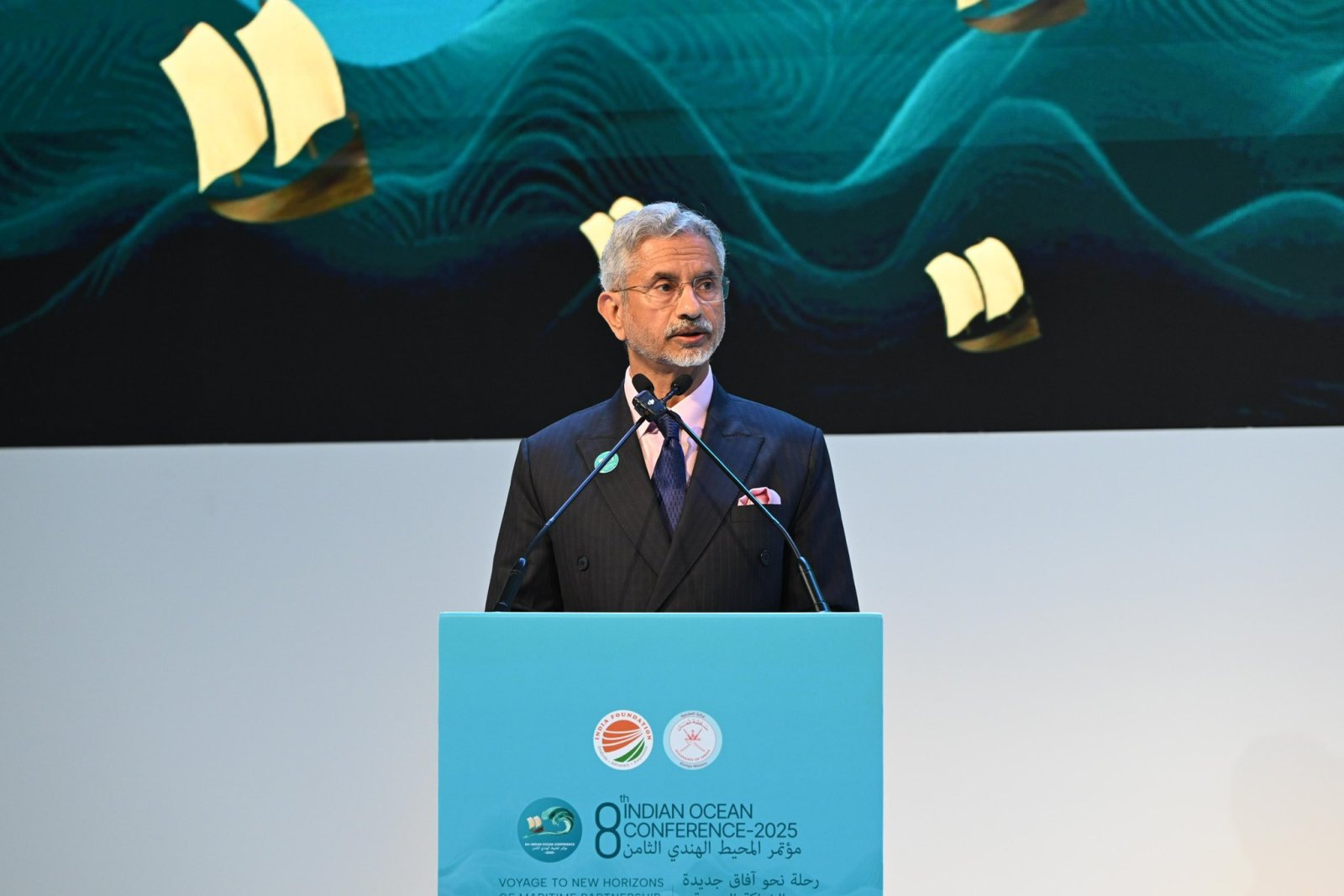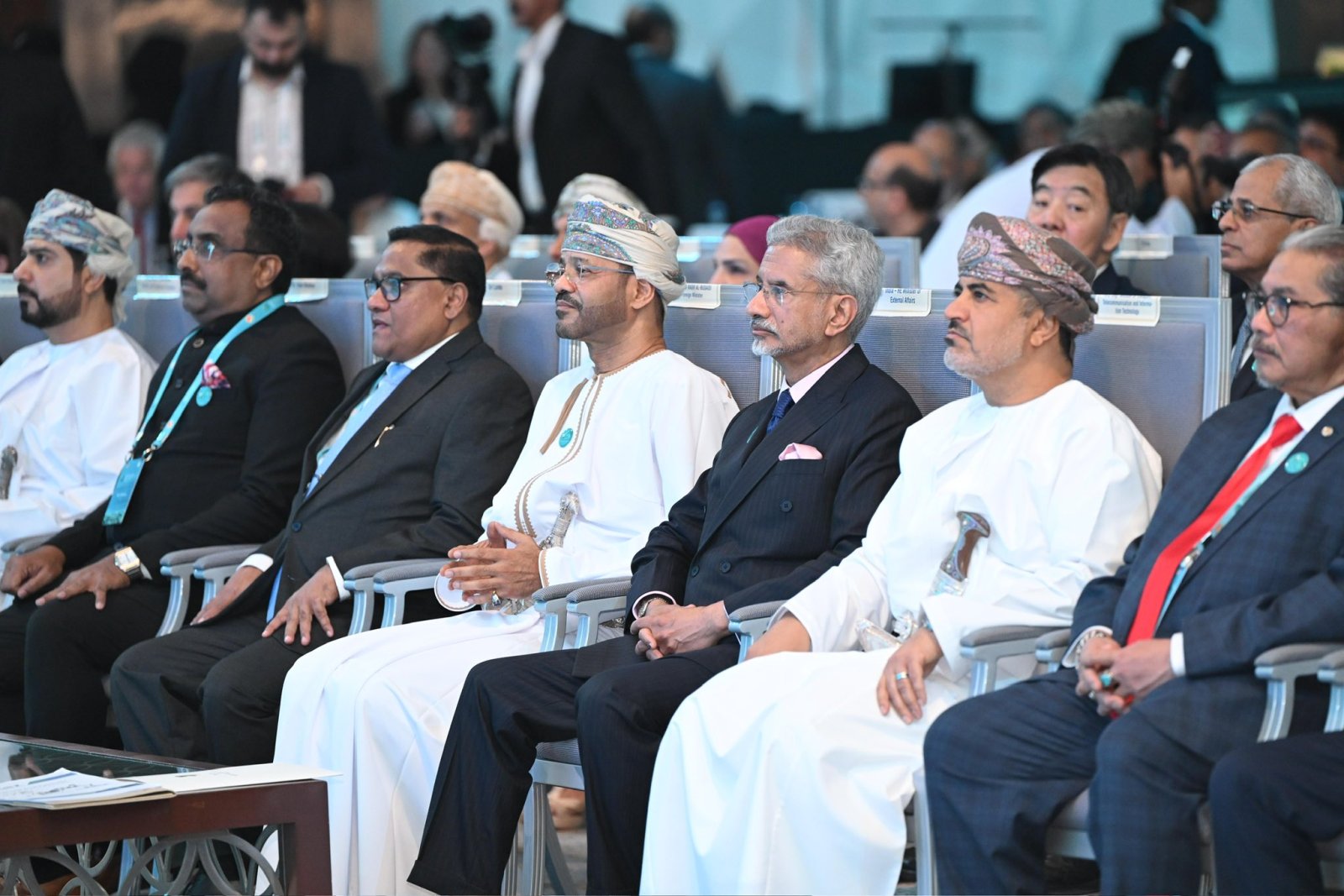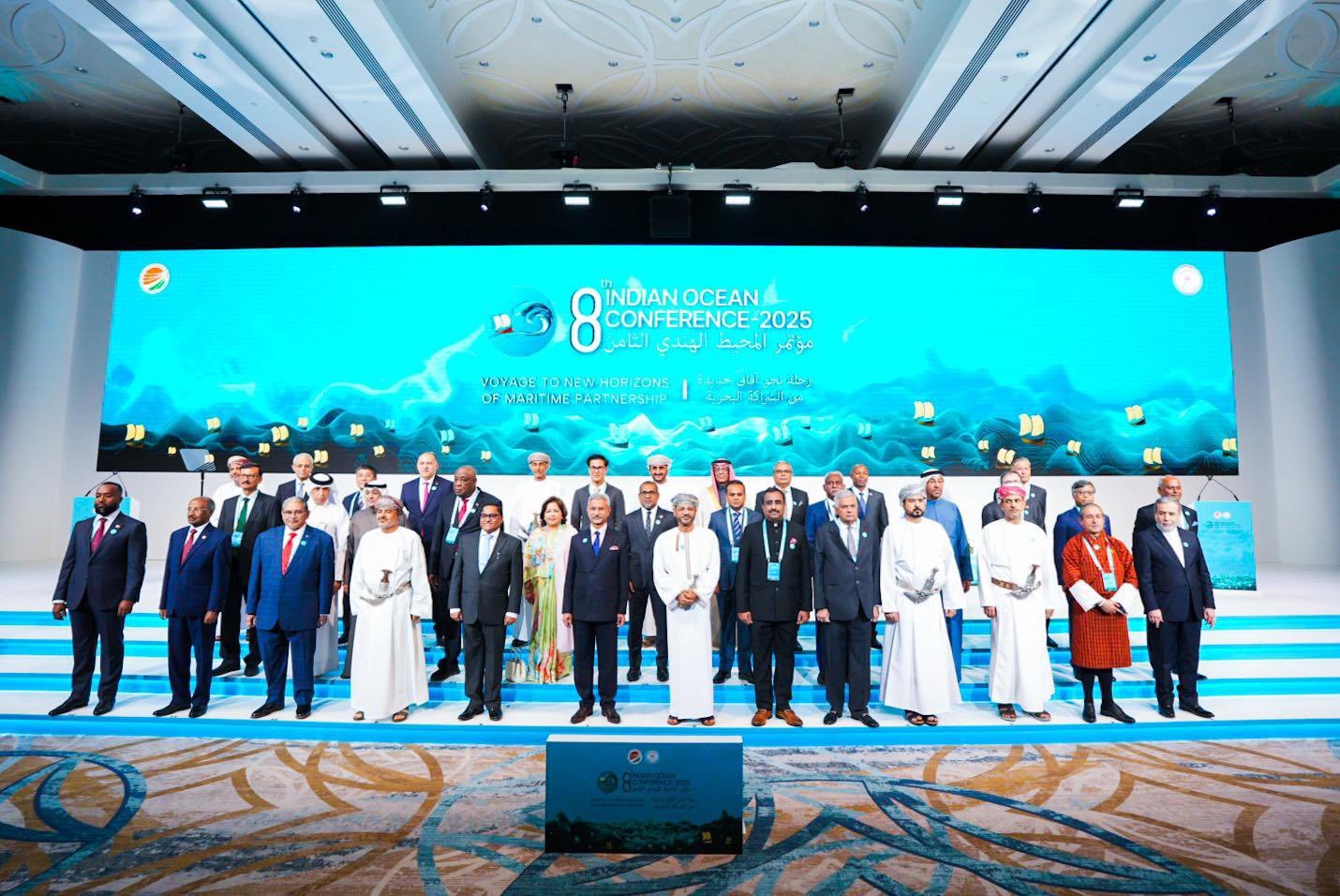- Home
- About Us
- Consular Services
- India-Sri Lanka Relations
- Media
- Country File
- Trade
- Education/ Scholarship
- Cultural SVCC
- Important links
- NDCA
Speeches & Statements
Keynote Address by External Affairs Minister (EAM), Dr. S. Jaishankar at 08th Indian Ocean Conference: Voyage to New Horizons of Maritime Partnership on February 16, 2025 at Muscat
February 17, 2025



Keynote Address by External Affairs Minister (EAM), Dr. S. Jaishankar at Indian Ocean Conference 2025: Voyage to New Horizons of Maritime Partnership (February 16, 2025)
Excellency,
Distinguished delegates,
Dear friends,It is a great pleasure to share my thoughts at the 8th Indian Ocean Conference on our voyage to new horizons of maritime partnership. Let me express my gratitude and appreciation to the Government of Sultanate of Oman, specifically to my brother FM Badr Albusaidi, to the organizers India Foundation, RSIS and to Ram Madhav ji, who has been the force behind the conference for so many years.Friends, we meet at a time when there is considerable churn in world affairs. At such a juncture, an open and constructive exchange of views is of particular benefit. I am confident that all of us will find great value in the discussions that we will be holding over the next two days.
Changes in the global order may be expressed through new ideas and concepts. But they are also reflected in the evolving landscape. The Indian Ocean region is no exception to that rule. And this matters not just to us as inhabitants of this community, but given our salience in so many dimensions, to other regions and nations as well. After all, as we heard from previous speakers, the Indian Ocean is veritably a global lifeline. It’s production, consumption, contribution and connectivity is central to the manner in which the world runs today.
At the two ends of the ocean, this churn is at its sharpest today. In the Middle East/West Asia, there is a serious conflict underway with the potential for further escalation and complication. At the same time, longstanding issues are being revisited, sometimes with a radically different approach. Its maritime consequence is visible in a serious disruption of global shipping, with considerable cost to our economies. There are questions which arise from our ability and willingness to respond, as indeed from the partnerships relevant to that task.
At the other end, the Indo-Pacific has been witnessing deeper tensions and sharper contestations. The scenario is intrinsically maritime in nature, involving respect for and observance of international law. There are other concerns, some related and some autonomous. Stronger assertions of interests is one issue; concern about unilateral changes to the status quo another. From India’s own experience, we can say that adhering to agreements and understandings is a central element to ensuring stability and predictability.
The region in between is where most of us come from, being littoral states or island nations of the Indian ocean. Each country has its individual challenge, but nevertheless, there are some general trends worth noting. Many are developmental in character but do, in some form or the other, impinge on maritime behaviour. Like other parts of the Global South, the Indian Ocean nations too face resource constraints and economic headwinds. Many of them are struggling to meet their SDG targets. In quite a few cases, debt is a serious concern. Some of that arises from stresses of the international economy, but in certain cases, from imprudent borrowing and unviable projects.
Another common issue is that of rebuilding connectivity in the region, after decades of colonial – era disruption. To make this a truly shared endeavor, it is vital to ensure that connectivity initiatives are consultative and transparent, not unilateral and opaque. Yet another widespread concern is the challenge faced by Indian Ocean states to monitor their EEZ and secure their fishing interests. Nor can they be impervious to illegal trafficking of various kinds and the specter of terrorism. Each of these dimensions – and certainly their cumulative impact – has a strong maritime implication. Our journey to new horizons must necessarily focus on addressing these challenges.
How is India contributing to those endeavors? Obviously, by rapidly strengthening its own capabilities and forging partnerships with Indian Ocean neighbours, near and far. But also, by shouldering responsibilities, stepping up in times of trouble and providing leadership where required. Let me underline this by providing 10 relevant examples:
One, Stabilising economies and societies under stress would surely rank among the most important. As the impact of COVID and conflict unfolded, India was the source of vaccines, medicines, food, fuel and fertilizer for many others. The biggest commitment it made was to Sri Lanka – a financial package of USD 4 billion to stabilize its economy that had slid into a crisis.
Two, the India – Middle East – Europe Economic Corridor (IMEC) and the India Myanmar Thailand Trilateral Highway (IMTT) would be among the two key collaborative connectivity initiatives under consideration. The International North South Transport Corridor (INSTC) is another significant example. India is obviously the common element in all of them. IMEC and INSTC have an explicit maritime segment, while the IMTT would provide a land link between India and the Pacific.
Three, we have increasingly been active in a First Responder mode in the Indian Ocean region. This could be the conflict in Yemen, natural disasters in Mozambique, Sri Lanka or Myanmar, earthquake in Nepal and Turkiye or a water crisis in the Maldives. Both off Mauritius and Sri Lanka, India has responded to significant oil spills.
Four, recognizing that an institutional response is required for disaster situations, India has been active in encouraging plurilateral cooperation. The most notable of these is the Quad initiative that encourages interoperability and cooperation for such contingencies. Similarly, the ReCAAP centre at Singapore to which India contributes helps address the challenge of piracy.
Five, in a world of increasing traditional and non – traditional threats in the maritime domain, it is essential that there is a common operating picture as well as shared platforms. The International Fusion Centre located outside Delhi aims to do just that. By establishing coastal surveillance radars and partnering on White Shipping agreements, maritime traffic is made safer and more secure for our collective benefit.
Six, it is unfortunately not just enough to prepare or even prevent. Extreme situations sometimes require a robust countering, including through the deployment of naval forces. For more than a year now, India has been doing precisely that in the Northern Arabian Sea and Gulf of Aden. Today, we are seeing some improvement in maritime safety and security as a result of such coordinated responses.
Seven, training and equipping other navies and coast guards is a natural extension of this approach. India has such collaboration with a range of countries, from Vietnam to Mauritius and Mozambique to Sri Lanka.
Eight, ensuring trusted communication in a digital era is a crucial national security objective for many of us. This is a task too big to be attempted by most individual nations. Participating in consortiums is therefore an inevitable outcome. Both as government and as vendor, India is contributing its fair share and more in this regard. The visit just concluded of PM Modi to the US highlighted this particular dimension.
Nine, in a globalized world, there is a growing realization that distance cannot be a justification for agnosticism on matters key to global welfare. As a result, the Indo – Pacific is experiencing activity of both resident and non – resident powers. Harmonizing them is a challenge that India, in particular, is well placed to address. It has the confidence of the Global South as well as the credentials to engage major powers. We strive to ensure that agendas alien to our ethos and outlook are not inserted in the region. And equally encourage respect for UNCLOS in both spirit and letter.
And finally tenth, India has been energetic in institution - building in the Indian Ocean region. We have the Indian Ocean Rim Association (IORA) whose current Secretary General is a senior Indian diplomat. We have BIMSTEC, whose SG is here today. We look forward to the BIMSTEC Summit soon. There is the Indian Ocean Naval Symposium (IONS), which is a productive conclave of naval representatives. There is the Colombo Security Conclave and there is the India Indo-Pacific Oceans Intiative. And of course, we have the Indian Ocean Conference itself, which brings together so many stakeholders at various levels.
Ladies and Gentlemen, our voyage to new horizons is best done as a coordinated flotilla of the Indian Ocean. We are understandably a diverse group in terms of history, geography, development, politics or culture. But what unites us is a common devotion to the well-being of the Indian Ocean region. In a volatile and uncertain era, we seek stability and security as the baseline. But beyond that, there are ambitions and aspirations that we strive to achieve. They will be easier reached when we look out for each other, supplement our strengths and coordinate our policies. I can assure you all that India will be in the forefront of these endeavours.
I thank you for your attention.
***









